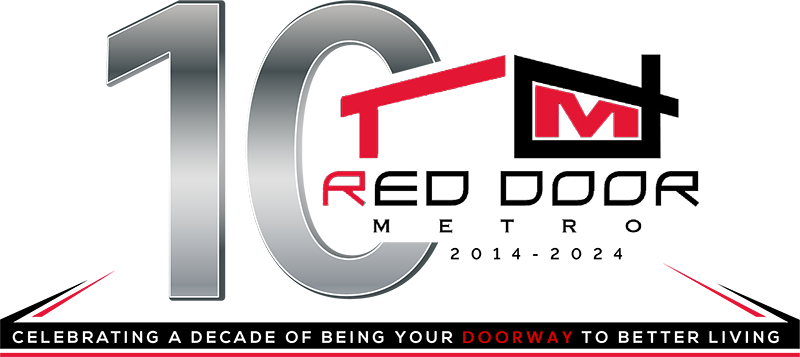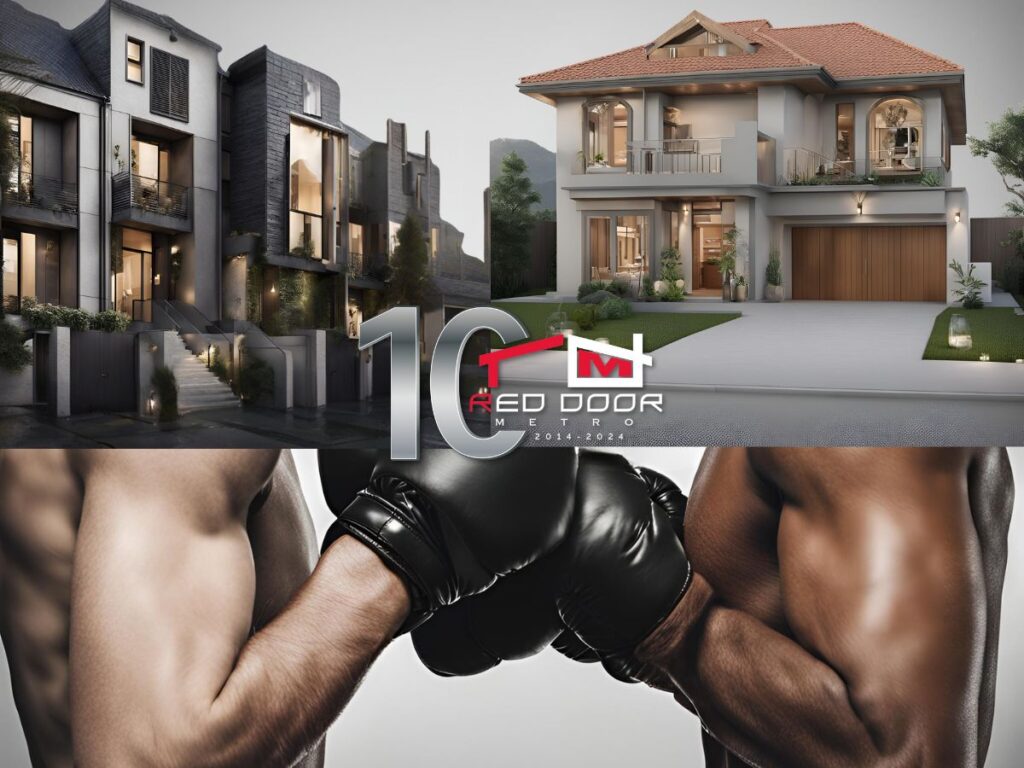What is an attached family home?
An attached family home, also known as a townhouse or row house, is a type of residential dwelling where individual units are connected side by side, sharing walls with neighboring homes. These units are part of a larger building or a row of houses that are structurally attached to each other. Here’s a breakdown of what an attached family home entails:
1. Shared Walls: Attached homes are physically connected to neighboring units, sharing walls on either side. This characteristic sets them apart from detached homes, where each house is standalone.
2. Compact Living: Attached homes are typically designed to optimize space, making them more compact and efficient in their layout compared to detached homes.
3. Multi-Story Design: Many attached family homes have multiple floors, allowing for vertical living with bedrooms and living spaces on different levels.
4. Common Features: They often have similar architectural designs and appearances, creating a uniform or cohesive look for the entire row or complex.
5. Common Amenities and Spaces: Depending on the development, attached family homes may share common areas like lawns, parks, gyms, or community centers.
6. Ownership Arrangement: Each unit in an attached home may be individually owned, but the overall structure and common areas are usually managed by a homeowners association (HOA), which residents contribute to for maintenance and shared services.
7. Urban and Suburban Locations: Attached family homes are commonly found in both urban and suburban areas. In urban settings, they may be part of a city block, while in suburban areas, they are often part of planned communities.
Advantages:
- Cost-Efficient: They are often more affordable than detached homes, making them accessible for first-time homebuyers or those looking for a more budget-friendly option.
- Community Living: Living close to neighbors can foster a sense of community and make it easier to build relationships.
- Less Maintenance: Shared walls mean less exterior maintenance compared to detached homes.
Considerations:
- Limited Privacy: Due to shared walls, there may be less privacy and more noise from neighboring units.
- HOA Rules: Homeowners may need to abide by rules set by the homeowners association, which can dictate aspects of living.
In summary, an attached family home is a type of housing where units are connected, sharing walls with neighboring homes. They offer a balance between affordability, community living, and shared maintenance responsibilities.
What is a detached family home?
A detached family home is a type of residential house that stands alone and is not physically connected to any other house. It is a single-family dwelling that is separate from neighboring homes, with open space surrounding it on all sides. Here are some key characteristics and details about detached family homes:
1. Standalone Structure: A detached home is not attached to any other dwelling. It is a self-contained structure with its own walls, roof, and foundation.
2. Privacy: One of the primary advantages of a detached home is the privacy it offers. You don’t share walls with neighbors, which means you have more control over noise levels and a greater sense of personal space.
3. Yard Space: Detached homes typically come with their own piece of land, including a front yard and a backyard. This outdoor space can be used for gardening, outdoor activities, or simply enjoying the outdoors.
4. Architectural Variety: Detached homes come in various architectural styles and sizes, providing homeowners with a wide range of options to choose from based on their preferences and needs.
5. Independence: When you own a detached home, you have more freedom to make changes and renovations to the property without the constraints of shared walls or spaces.
6. Property Ownership: Detached homes are often sold as single parcels of real estate, giving you sole ownership of both the house and the land it sits on.
7. Maintenance Responsibility: As the sole owner, you are responsible for all maintenance and upkeep of the property, including the exterior, landscaping, and any necessary repairs.
8. Typically Found in Suburban Areas: Detached homes are commonly found in suburban and rural areas, where there is more space available for individual houses with larger lots.
In summary, a detached family home is a single, standalone house that provides privacy, outdoor space, and independence from neighboring properties. It’s a popular choice for those who value personal space and enjoy having control over their property and its surroundings.
Simple comparison chart highlighting the key differences between attached and detached family homes:
| Aspect | Attached Family Home | Detached Family Home |
|---|---|---|
| Physical Structure | Connected to neighboring homes, shares walls | Stands alone, no shared walls with neighbors |
| Privacy | Less privacy due to shared walls | More privacy with no shared walls |
| Outdoor Space | Smaller yard or patio | Larger yard, front, and back |
| Architectural Style | Uniform look within a row | Unique style based on personal preference |
| Maintenance | Shared maintenance responsibility, often HOA-managed | Individual responsibility for maintenance |
| Cost | Often more affordable | Typically higher cost due to land and space |
| Customization | Limited customization due to shared walls | Greater freedom for customization and renovation |
| Community | Stronger sense of community due to proximity | Potential for a more private living experience |
| Resale Value | Resale value influenced by neighboring units | Often higher resale value due to standalone nature |
This chart summarizes the key distinctions between attached and detached family homes, covering aspects like structure, privacy, outdoor space, architectural style, maintenance, cost, customization, community, and resale value.
FAQs
1. Q: What is an attached family home?
A: An attached family home, also known as a townhouse or row house, is a residential dwelling where units share walls with neighboring homes in a row or complex.
2. Q: What defines a detached family home?
A: A detached family home is a standalone residential house that is not physically connected to any other house and has its own land surrounding it.
3. Q: What are the privacy differences between attached and detached homes?
A: Detached homes offer more privacy as they do not share walls with neighbors, while attached homes may have less privacy due to shared walls.
4. Q: Are attached family homes more affordable than detached homes?
A: Yes, attached family homes are generally more affordable than detached homes due to shared walls and a smaller footprint.
5. Q: Do detached family homes have larger outdoor spaces?
A: Yes, detached family homes typically have larger yards, both in the front and back, compared to the smaller yard or patio of attached homes.
6. Q: How does maintenance differ between attached and detached homes?
A: Maintenance for attached homes often involves shared responsibilities and is managed by a homeowners association (HOA), whereas detached homes require individual maintenance efforts.
7. Q: Can I customize an attached family home like I would a detached one?
A: While customization is possible in attached homes, it’s often more limited compared to detached homes due to shared walls and architectural constraints.
8. Q: Which type of home offers a stronger sense of community?
A: Attached homes often foster a stronger sense of community due to the proximity of neighbors and shared spaces.
9. Q: What’s the resale value difference between attached and detached homes?
A: Detached homes generally have a higher resale value due to their standalone nature and larger land ownership.
10. Q: Where are attached family homes typically found in Northern Virginia?
A: Attached family homes are commonly found in both urban and suburban areas of Northern Virginia, often in planned communities.
11. Q: Are detached family homes more common in certain regions of Northern Virginia?
A: Detached family homes are more prevalent in suburban and rural areas of Northern Virginia, offering larger lots and standalone structures.
12. Q: What types of architectural styles are common for detached homes in Northern Virginia?
A: Northern Virginia offers a variety of architectural styles for detached homes, including Colonial, Craftsman, Contemporary, and more.
13. Q: Are there any restrictions on renovations for attached family homes?
A: Renovations in attached homes may be subject to HOA guidelines and shared wall considerations, potentially limiting certain modifications.
14. Q: Do attached family homes have shared amenities or common spaces?
A: Yes, many attached family home communities have shared amenities like parks, pools, or community centers.
15. Q: Can I have a backyard garden in an attached family home?
A: Yes, you can typically have a smaller backyard garden in an attached family home, although the space may be more limited compared to a detached home.
16. Q: How do property taxes vary between attached and detached homes?
A: Property taxes for both types of homes are influenced by factors like location, size, and amenities rather than whether the home is attached or detached.
17. Q: Are attached family homes more energy-efficient than detached homes?
A: Energy efficiency varies based on individual factors such as insulation, appliances, and systems, rather than the attachment style of the home.
18. Q: Is there a difference in the availability of parking spaces for attached and detached homes?
A: Attached homes may have limited parking options compared to detached homes, which typically have dedicated driveways or garages.
19. Q: Are there more noise concerns in attached homes compared to detached homes?
A: Yes, due to shared walls, noise can be more noticeable in attached homes compared to detached homes with no shared walls.
20. Q: How do school districts differ for attached and detached homes in Northern Virginia?
A: School districts vary based on the specific location rather than the type of home, so both attached and detached homes can be found in good school districts in Northern Virginia.



